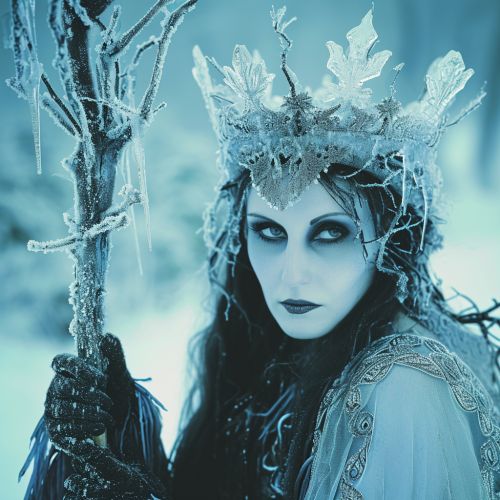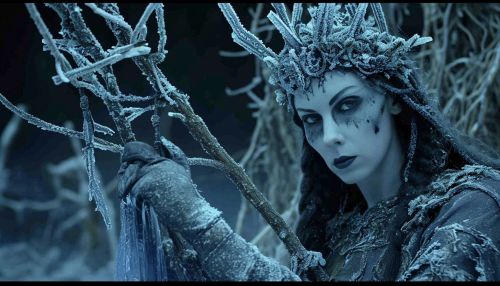Morena (goddess)
Origins and Mythology
Morena, also known as Morana, Marzanna, and Mara, is a goddess in Slavic and Baltic mythologies. She is primarily associated with winter, death, and rebirth, embodying the cyclical nature of life and the seasons. Her name is believed to derive from the Old Slavic word "mar", meaning death or plague, underlining her association with the end of life.


Morena's origins can be traced back to pre-Christian times, with evidence of her worship found across various Slavic and Baltic regions. She is often depicted as a woman with pale skin and dark hair, symbolizing the bleakness of winter and the darkness of death. Despite her seemingly grim associations, Morena also represents the necessary end before rebirth, making her a crucial figure in the cycle of life and seasons.
Role in Slavic and Baltic Mythologies
In Slavic and Baltic mythologies, Morena is the goddess who rules over the winter months. She is often depicted as a hag or an old woman, symbolizing the harshness and cold of winter. As the winter months pass, Morena's power wanes, and she eventually dies, making way for the arrival of spring and the rebirth of life.
Morena is also associated with death and the underworld. She is believed to take the souls of the deceased to the underworld, where they await rebirth. In some traditions, she is also associated with nightmares and sleep paralysis, further emphasizing her connection to the darker aspects of existence.
Worship and Rituals
The worship of Morena was widespread among the Slavic and Baltic peoples. Her rituals often involved the creation of an effigy, typically made of straw and dressed in female clothing. This effigy represented Morena and was treated with reverence until the end of winter.
The most significant ritual associated with Morena is the Drowning of Marzanna, a traditional Slavic ritual that marks the end of winter and the arrival of spring. The effigy of Morena is paraded through the village, then thrown into a river or burned, symbolizing the defeat of winter and death, and the rebirth of life with the arrival of spring.
Modern Interpretations and Influence
Morena's influence extends into modern times, with her character and symbolism often explored in literature, art, and popular culture. She is sometimes portrayed as a villain due to her association with death and winter, but many interpretations emphasize her role in the cycle of life and rebirth.
In modern Pagan and Neopagan movements, Morena is often revered as a goddess of death and rebirth. Her association with the changing seasons and the cyclical nature of life resonates with many contemporary spiritual practices.
